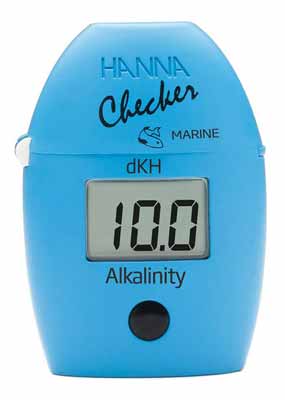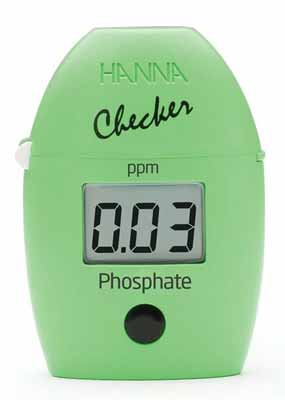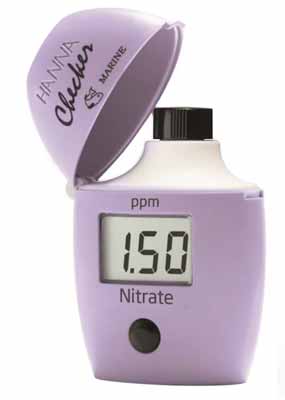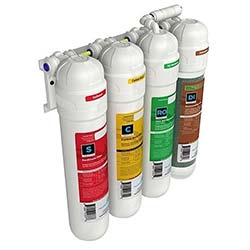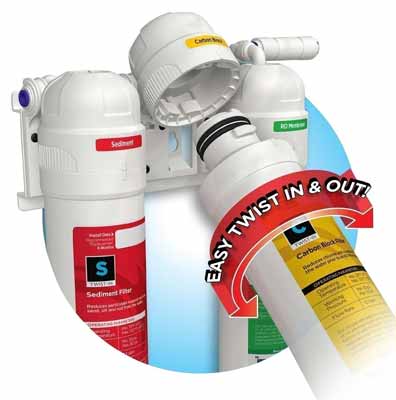The difference between a problem reef tank and a thriving reef tank is a proper maintenance regimen. If saltwater aquarium maintenance is neglected, water quality begins dropping at an exponential rate, and your fish and corals begin to suffer or even die.
Maintenance doesn’t have to be a chore. It’s easier to do the little things regularly before larger problems arise. Continue reading to learn the simple steps needed to keep your reef tank clean and its inhabitants healthy.
How do I keep my saltwater tank clean?
Saltwater aquariums need quite a few tasks to be routinely monitored, adjusted, and cleaned to have perfect water quality for your saltwater fish. It’s a good idea to establish a maintenance schedule for yourself with all the tasks listed below to ensure that you are hitting all the necessary tasks.
- Water changes
- Algae cleaning
- Water quality testing
- Water temperature
- Nitrate levels
- Alkalinity
- Phosphate levels
- Salinity
- Clean calcium deposits and salt creep
- Clean lenses on lights
- Dump skimmer collection cup
- Clean or replace filter socks
- Equipment cleaning and maintenance
- Appropriate feeding
Saltwater aquarium maintenance checklist
All of this might seem like a lot so here is a way to split up the maintenance tasks based on daily, weekly, and monthly schedules. Remember this is all an average and your specific maintenance schedule might look different based on whatever extra pieces of equipment or fish you have included in your reef tank.
Daily Tasks
Aquarium water can get gross so you must be doing the necessary tasks daily to ensure it stays where it needs to be.
- Check on your fish! Your saltwater fish will be the biggest indicator if there is something wrong in your reef tank. If something seems off, immediately start testing the water quality to see what the issue might be in your aquarium.
- Of course, you can always check your water parameters daily if you are worried problems will arise. It is better to be safe than sorry but if you are an experienced aquarist, there might be less need to stick to such a strict maintenance schedule.
- Look over equipment to ensure that it is all running properly. You might also check water temperature but that is up to personal preference.
- Inspect filter socks to see if they need to be cleaned or replaced.
Weekly Tasks
A weekly checklist for your aquarium is a little more important to ensure that you don’t overlook them.
- Check water parameters and correct any issues there might with temperature, nitrate, alkalinity, phosphate, or salinity levels in your reef tank. One of the most important things you can keep is a test kit in your toolbox to get the most accurate readings even especially if equipment failure might be a concern. You might also live in an especially sunny area and notice that your tank’s water is quickly evaporating which is one of the more common reasons for more frequent top-offs.
- Water changes are one of the most important things that you need to incorporate into a maintenance schedule however there can be some debate as to when you should do them. Weekly might be unnecessary so aim for every two weeks to perform your aquarium water change. Equipment like a protein skimmer could help to reduce your average water changes but that means you need to watch the collection cup. Empty the collection cup regularly to ensure that the protein skimmer can do its job effectively.
- Filter socks should be cleaned or replaced at least weekly. Filter socks are an important component of your system. They remove larger organics such as uneaten food and fish poop before it begins to decay and cause problems. If your filter socks aren’t cleaned at least weekly the organics begin to break down in the sock and release harmful elements into your water.
Monthly Tasks
Saltwater aquariums become filthy no matter how many water changes you do. There will be times when you might need to get your hands a little dirty.
- Water change – Some people can get away with a water change once a month but remember that those people are probably more experienced. If you are confident in our setup, you may be able to keep to only one water change a month for your aquarium but only do so if you are ready. Remember to replace that mechanical filter media a few days AFTER the change.
- Protein skimmer – Emptying the collection cup is one thing but sometimes your protein skimmer can really benefit from a deeper clean.
- Algae cleaning – Algae can accumulate on any piece of equipment that comes in contact with water and light. Use an algae scrubber to help clean your aquarium glass. For decor and other objects, you may need to remove the pieces unless you have a really effective clean-up crew.
- Equipment cleaning – Finally, check your return pump, hoses, heater, powerheads, etc. to see what kind of cleaning they may need. Remove algae from them or excess calcium deposits. You can do this with vinegar baths but make sure to properly rinse the equipment before reinstalling them in your aquarium.
- Salt creep – As your aquarium water evaporates it will leave behind salt. It’s common for salt to build up in certain areas around your sump, display tank, and on equipment. It’s wise to clean this off to make sure it doesn’t interfere with float valves, auto top off sensors, etc. It also makes things look nicer of course.
These are just the average chores that you should incorporate into your schedule but don’t think this is everything. In the long term, you will need to watch out for tubing that gets clogged, lighting burning out, and replacing/restocking your aquarium.
How often does a saltwater tank need to be cleaned?
That depends on what you mean by cleaning your saltwater tank. You will not need to empty it and give it a deep scrub ever if you are properly caring for it. Aquarium maintenance relies on regular water changes, which for most tanks should be about every two weeks.
Many of these maintenance tasks will depend on the setup of your tank as to how often you need to do them.
Is it expensive to maintain a saltwater aquarium?
A saltwater aquarium is expensive and regular maintenance can actually make it less expensive in the long run. However, you will still need to purchase quality equipment, supplements, gauges, or replacement parts, or new organisms to keep your tank running in tip-top shape.
Is it difficult to maintain a saltwater aquarium?
No, not necessarily. The biggest challenge is understanding the needs of your specific inhabitants. What that means is researching the different fish, plants, corals, crustaceans, and other organisms that you may have. They all have their own needs like water quality, water flow, and food. Their needs will dictate your maintenance routine requirements but once you know-how, carrying out the maintenance is no trouble at all.
How do I change the water in my marine aquarium?
Changing the water in your reef aquarium will be one of the most important jobs and it is a good idea to become confident in doing it. Adding new saltwater to your aquarium can have a huge impact on the water chemistry which in turn affects the health of your reef tank’s inhabitants and algae levels because of the regulation of the nitrate/phosphate levels.
- First, you need to make your saltwater. Check out our article on making tap water safe and saltwater mixing.
- Once you have your aquarium-safe saltwater, you just need to ensure that it is the correct temperature so you aren’t risking a severe temperature change to your reef tank. Use a submersible heater to help get a temperature that more accurately matches your display tank.
- Double-check the salinity is within your tank’s parameters.
- Use tubing that is long enough to each your aquarium and an empty bucket and create a siphon. The siphon will be how we remove some of the dirty salt water from the tank into the empty bucket. We are aiming for anywhere between 15 and 30 percent of the saltwater to be removed. Make sure not to remove more saltwater than you made in your other bucket. Note: the percent of saltwater will change depending on the frequency of your changes. Smaller changes should be done for more frequent routines.
- Now just do the same thing but with your new saltwater and siphon it into the tank.
Can I top off my saltwater with tap water?
To safely top off your fish tank’s water you will need to use RO/DI water for a safe top-off experience. You can’t just use tap water because, though it is fresh water, it has additives from your city that are not ideal for your fish like chlorine. RO/DI water is freshwater without the harmful additives that will be harmful to your fish, corals, and plant’s health.
Topping off water is also very important since the water in your tank will evaporate. The problem with evaporation is that you lose the saltwater but none of the salinity, fish waste, and other nasties that are there so they begin to become more concentrated with evaporation.
Reverse Osmosis Filter (RO/DI)
Tap water isn’t going to work for your saltwater aquarium. It has high phosphates which will cause algae blooms and also contains harsh chemicals like chlorine that aren’t good for fish or corals. A quality reverse osmosis filtration system can purify your tap water so you can mix your own saltwater at home.
How do you keep a fish tank clean without changing the saltwater?
Changing the water in your tank is the most effective routine to ensure that you are controlling nitrate, alkalinity, phosphate, ammonia, and nitrite levels in your aquarium. However, many of these levels are sourced by the waste from fish, food, and other biological debris. If you can take care of the source, you can slightly extend the amount of time before your next change. You must stick to a routine if you want this to be effective though. Once the levels rise, they need to be dealt with and a change in water is the most effective method for aquariums.
The secret to maintaining your nitrate and other parameters is cleaning weekly. Use a vacuum (siphon) to clean up the debris from the bottom of the tank; this process will help if you slightly stir up the sand to get the debris more the surface for easy pickup. Also, depending on your substrate, you may not be able to get too close with the vacuum or you risk sucking up your sand. Clean the inside of your aquarium’s glass with an algae scraper. Wash the decor using bleach and RINSE thoroughly before returning to your aquarium.
The Triton Method
If you would like to completely eliminate water changes you can follow the Triton Method. Triton is a company that offers this program of testing your water and supplementing trace elements based on regular test results. You also need to set up your aquarium in a specific way to adhere to the method they outline. It’s a popular reef-keeping technique and worth checking out. You’ll still need to add water to top up your aquarium due to evaporation but it will eliminate the chore of regular water changes.
Automatic Water Changes
While not eliminating water changes, you can automate the process to a degree. If you’re familiar with using an auto-top-off to make up for evaporation, you can use the same basic principle to do a water change automatically. If you have a drain in a sink or similar nearby you can pump out water and replace it all automatically using something like a Neptune Apex reef tank controller.
It’s a complicated setup and I can tell you from experience that you may find keeping it working like you want it to may be more challenging than simply doing water changes regularly. At a minimum expect a lot of trial and error and keep in mind backups to prevent overflows onto your floor.
Even if you’re doing automatic water changes successfully you’ll likely want to do a normal water change from time to time so you can clean your substrate.
Do LED lights cause more algae in a marine aquarium?
No more than any other type of powerful and high-quality light source. Any type of light will allow the growth of algae in a marine tank. You can introduce macroalgae to your tank to help control the nutrient levels like phosphate from being abundant.
The most common method of doing this is adding a fast-growing macroalgae like chaeto or sea lettuce to a section of your sump called a refugium and placing a grow light above the macroalgae. These prolific macroalgae, when provided with a powerful high-quality grow light, will often out compete nuisance algae in your main display tank.
Where do I get water for saltwater aquariums?
You can get saltwater from your local pet store but it’s always a better idea to learn to make your own using a salt mix and RO/DI water. If you want to learn more about how to make quality saltwater for your aquarium at home that contains the right amount of salt and trace elements you can learn all you need to know in our article on the subject of making tap water safe and mixing saltwater.
How do I keep my saltwater fish happy?
Your saltwater fish will be happy as long as their water quality is within their required parameters and they are fed daily. As long as you are doing your best to ensure those two factors, your fish will be swimming with smiles on their faces (figuratively, of course).
Saltwater aquarium maintenance service
If all of this seems like too much, some businesses specialize in servicing your tank for you. However, contracting these services will be much more expensive for you and it is recommended that you begin to learn how to service your own tank.
If there is an emergency, you’re on an extended vacation, or certain aspects of care that you can’t quite get your head wrapped around right away, then please contact the services. They will help to ensure that your tank is okay but for the sake of your wallet, it might be a good idea to learn how to perform the services yourself.
Final thoughts
Carrying out a proper care schedule will ensure that your fish are happy and will thrive in your marine tank. I would recommend creating a schedule to help differentiate what jobs you should be doing when.
